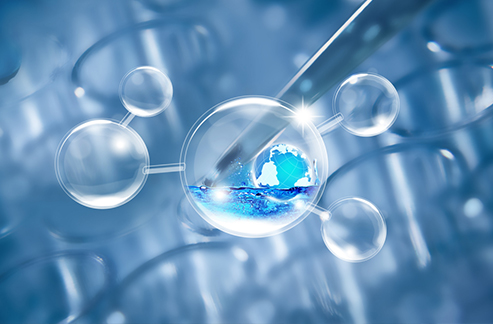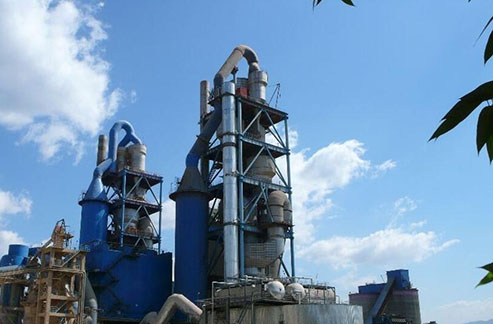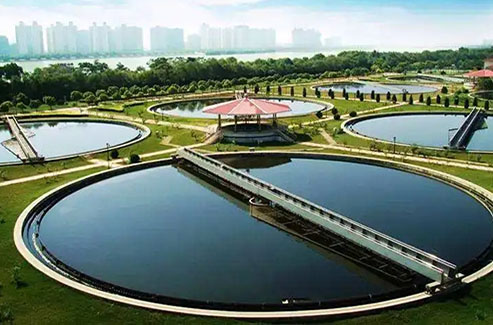






The application of oxygen in the food and beverage industry is quite important, mainly manifested in the following aspects
1. Food preservation: Oxygen is one of the main causes of food spoilage, but by controlling the concentration of oxygen, the shelf life of food can be extended. For example, in packaged food, reducing oxygen exposure can inhibit bacterial growth and food oxidation, thereby maintaining the freshness and taste of the food. Especially in the preservation process of perishable foods such as meat, fruits, and vegetables, the role of high-purity oxygen is particularly significant.
2. Beverage bubbles: During the beverage production process, oxygen (usually mixed with other gases such as carbon dioxide) can be used to create bubbles, increasing the taste and durability of the beverage. This technology makes beverage bubbles more delicate and long-lasting.
3 Food processing: In the food processing process, oxygen serves as a combustion aid gas, which can enhance flame combustion, improve heating efficiency and temperature. For example, in food processing such as bread baking, barbecue, and baking, the use of high-purity oxygen can improve the cooking effect and taste of food.
In addition, oxygen can also be used in combination with other gases such as nitrogen to further improve the quality of food and beverages. For example, nitrogen can eliminate air, create a hypoxic environment, inhibit the growth of bacteria and mold, extend the shelf life of food, and improve its edibility. Meanwhile, nitrogen can prevent the oxidation of fats, natural pigments, and micronutrients, maintain the original color, aroma, and improve food quality.
However, although oxygen has many applications in the food and beverage industry, its use must comply with strict safety regulations and standards to ensure product quality and safety.

Oxygen is widely used in the industrial field, covering multiple aspects. The following are some main application areas:
1. Metal smelting: In the process of metal smelting, oxygen is used as an oxidant, reacting with impurity elements in the metal ore to convert them into soluble oxides, making it easier to extract metals from the ore. This application is common in the smelting industry of steel, non-ferrous metals, and other industries.
2. Combustion and cutting: Oxygen is a commonly used combustion aid. In industrial production, it is often mixed with combustible substances (such as acetylene, propane, etc.) to form a high-temperature flame, which is used for cutting, welding, and heating materials such as metals. This type of application is common in industrial fields such as steel, machinery, and shipbuilding.
3. Oxidation reaction: Oxygen has strong oxidizing properties and can undergo oxidation reactions with many elements and compounds. In industrial production, oxygen is often used as an oxidant to promote chemical reactions. For example, in industrial processes such as petrochemicals, pharmaceuticals, and synthetic ammonia, oxygen plays an important role.
4. Waste gas treatment: Oxygen also plays an important role in industrial waste gas treatment. Injecting oxygen into the exhaust gas can promote the oxidation and decomposition of harmful substances, thereby reducing the emission of pollutants. This application helps to improve environmental quality and protect the ecological environment.
Overall, oxygen is widely used in the industrial field, involving multiple industries and fields. These applications not only improve the efficiency and quality of industrial production, but also contribute to improving environmental quality and protecting the ecological environment. However, when using oxygen, it is also necessary to pay attention to safety, comply with relevant safety regulations and operating procedures, to ensure the safety and effectiveness of the use process.

Oxygen has a wide range of applications in scientific research, involving multiple disciplines such as biology, chemistry, and physics. The following are some application examples of oxygen in the field of scientific research:
1. Biological research:
Cell culture: Oxygen is an essential factor in cell culture. Cells require oxygen for respiration to generate energy to sustain their life activities. In the laboratory, the growth environment of cells is usually maintained by introducing a mixture of oxygen and carbon dioxide into the cell culture chamber.
Mitochondria research: Mitochondria are the "power factories" within cells, responsible for oxidizing food molecules and releasing energy. Oxygen, as the ultimate electron acceptor of mitochondria, is crucial for their function and energy production. Studying how mitochondria utilize oxygen for oxidative phosphorylation and other processes can help to gain a deeper understanding of the mechanisms of cellular energy metabolism.
2 Chemical research:
Oxidation reaction research: Oxygen is a strong oxidant that can undergo oxidation reactions with many substances. In chemical research, oxygen is widely used in various oxidation reactions, such as organic synthesis, metal oxidation, etc.
Catalyst research: Oxygen can also serve as a catalyst or a part of a catalyst to promote chemical reactions. For example, in fuel cells, oxygen participates as an oxidant in the reaction, promoting the electrochemical reaction between hydrogen and oxygen to generate electricity.
3 Physics research:
Combustion research: Oxygen is one of the necessary conditions for combustion reactions. In physics, by studying the supply and consumption of oxygen during combustion, one can gain a deeper understanding of the essence and mechanism of combustion.
Superconducting material research: Oxygen plays an important role in the preparation process of certain superconducting materials. By controlling the oxygen content and supply method, the performance and stability of superconducting materials can be affected.
In addition to the aforementioned applications, oxygen also plays an important role in other scientific research fields, such as materials science and environmental science. With the continuous development of science and technology, the scientific research and application of oxygen will continue to expand and deepen. It should be noted that during scientific research experiments, oxygen should be used correctly according to experimental requirements and safety standards to ensure the safety and accuracy of the experiment.

Oxygen has a wide range of applications in scientific research, involving multiple disciplines such as biology, chemistry, and physics. The following are some application examples of oxygen in the field of scientific research:
1. Biological research:
Cell culture: Oxygen is an essential factor in cell culture. Cells require oxygen for respiration to generate energy to sustain their life activities. In the laboratory, the growth environment of cells is usually maintained by introducing a mixture of oxygen and carbon dioxide into the cell culture chamber.
Mitochondria research: Mitochondria are the "power factories" within cells, responsible for oxidizing food molecules and releasing energy. Oxygen, as the ultimate electron acceptor of mitochondria, is crucial for their function and energy production. Studying how mitochondria utilize oxygen for oxidative phosphorylation and other processes can help to gain a deeper understanding of the mechanisms of cellular energy metabolism.
2 Chemical research:
Oxidation reaction research: Oxygen is a strong oxidant that can undergo oxidation reactions with many substances. In chemical research, oxygen is widely used in various oxidation reactions, such as organic synthesis, metal oxidation, etc.
Catalyst research: Oxygen can also serve as a catalyst or a part of a catalyst to promote chemical reactions. For example, in fuel cells, oxygen participates as an oxidant in the reaction, promoting the electrochemical reaction between hydrogen and oxygen to generate electricity.
3 Physics research:
Combustion research: Oxygen is one of the necessary conditions for combustion reactions. In physics, by studying the supply and consumption of oxygen during combustion, one can gain a deeper understanding of the essence and mechanism of combustion.
Superconducting material research: Oxygen plays an important role in the preparation process of certain superconducting materials. By controlling the oxygen content and supply method, the performance and stability of superconducting materials can be affected.
In addition to the aforementioned applications, oxygen also plays an important role in other scientific research fields, such as materials science and environmental science. With the continuous development of science and technology, the scientific research and application of oxygen will continue to expand and deepen. It should be noted that during scientific research experiments, oxygen should be used correctly according to experimental requirements and safety standards to ensure the safety and accuracy of the experiment.

Oxygen is also widely used in strategic emerging industries such as coal chemical industry, float glass, new energy, new materials, and environmental protection. The following are the specific applications of oxygen in these fields:
1. Coal chemical industry: In the process of coal chemical industry, oxygen acts as a gasifying agent and reacts with coal to produce coal gas. Coal gasification is the leader of coal chemical industry and the core of clean coal technology. The coal gas produced by coal gasification is synthetic gas, which can further synthesize chemicals such as methanol, dimethyl ether, synthetic ammonia, urea, fuel oil, etc., providing raw materials for downstream chemical industries.
2. Float glass: In the production process of float glass, oxygen is used as a combustion gas, mixed with fuel for combustion, providing the high-temperature environment required for the glass furnace. The flame generated by oxygen combustion has a high temperature and concentrated heat, which helps to improve the melting rate and quality of glass.
3. New energy: In the field of new energy, oxygen is mainly used in fuel cells and solar energy for water splitting and hydrogen production. A fuel cell is a device that directly converts chemical energy into electrical energy, in which oxygen participates as an oxidant in the reaction, reacts with hydrogen gas to generate water and release electrical energy. Solar photocatalytic water splitting for hydrogen production utilizes solar energy to decompose water into hydrogen and oxygen. Hydrogen can be used as fuel, while oxygen can be used in other industrial processes.
4. New materials: In the field of new materials, oxygen is mainly used in processes such as metal smelting and alloy preparation. By introducing oxygen into the molten metal, impurity elements can be removed, improving the purity and performance of the metal. In addition, oxygen can also be used to prepare new materials such as oxide ceramics and glass fibers.
5. Environmental protection: In the field of environmental protection, oxygen is mainly used for wastewater treatment and exhaust gas treatment. By introducing oxygen into wastewater, it can promote the growth and metabolism of microorganisms, accelerate the degradation and transformation of organic matter, and thus purify water quality. In terms of exhaust gas treatment, oxygen can act as an oxidant to react with harmful gases, converting them into harmless substances and reducing environmental pollution.
In summary, oxygen is widely used in strategic emerging industries such as coal chemical industry, float glass, new energy, new materials, and environmental protection, providing important support and guarantee for the development of these fields.
contact
Be the first to know about our new product launches, latest blog posts and more. Hangzhou Medoxygen Technology Co., Ltd. (hereinafter referred to as Medox) is an international life technology group and national high-tech enterprise. The company integrates research, development, pr...
Hangzhou Medoxygen Technology Co., Ltd. (hereinafter referred to as Medox) is an international life technology group and national high-tech enterprise. The company integrates research, development, pr... Any question or request?
Click below, we’ll be happy to assist. contact